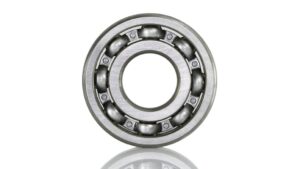Deep groove ball bearing tolerance standard
The position and size of the inner diameter zone are different from the general reference hole. The inner diameter of (G and E) or (0 and 6) rolling bearing is a reference hole with a special tolerance zone position, and the tolerance zone of the inner diameter of the bearing of each accuracy class starts from the zero line and goes down Layout, the upper deviation is zero, and the lower deviation is negative. The position of the outer diameter belt is similar to that of the base shaft system, which is arranged downward from the zero line.

1. When the bearing inner diameter tolerance zone and the shaft tolerance zone form a fit, the tolerance code originally belonging to the transition fit in the general base hole system will become an over-win fit, such as k5, k6, m5, m6, n6, etc., but the over-win amount Not big; when the bearing inner diameter tolerance is matched with h5, h6, g5, g6, etc., it is not a clearance but an over-win fit.
2. Because the tolerance value of the bearing outer diameter tolerance zone is different from that of the general reference shaft, it is also a special tolerance zone. In most cases, the outer ring is fixed in the housing hole, and some bearing components need to be adjusted for structural requirements. It should not be too tight, and often cooperate with H6, H7, J6, J7, Js6, Js7, etc.
3. The selection is related to the accuracy of rolling bearings:
① Shafts matched with G(0) bearings, their tolerance grade is generally IT6, housing holes are
② matched with E(6), D(5) bearings, and shafts are generally IT5 , The housing hole is IT6. It depends on the specific conditions of use. If the shaft is a rotating load, the speed is higher, and the load is larger, then the requirement is tight; if it is a static load, it can be loosened; it also depends on the installation method, if the inner and outer rings are installed at the same time, it is convenient for assembly
Under normal circumstances, the shaft is usually marked 0~+0.005? If it is not often removed, it is +0.005~+0.01 interference fit is fine, if it is frequent Disassembly and assembly are just transitional fits. We also need to consider the thermal expansion of the shaft material itself during rotation, so the larger the bearing, the best clearance fit between -0.005 and 0, and the maximum clearance fit should not exceed 0.01.
The bearing is generally the transition or clearance between the bearing and the hole, and the interference is used for special purposes. If you choose the interference, the bearing hole selects N7 and P7, and the shaft selects N6 and P6 respectively. The tolerance of the hole is increased by one level. The K7 upstairs is also optional. In general, if the accuracy is not high, the transitional fit of the bearing and the hole can be used.






